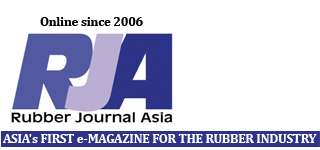Platts reports, “European solution styrene butadiene rubber spot prices fell to their lowest level last week since Platts started assessing the market in September 2012 on warmer-than-expected temperatures as the winter-tire season fails to take off, according to sources.
The SSBR 5025 price assessment of $1,605/mt FD NWE last week was the lowest level since Platts began assessing it in September 2012. Demand has been impacted by unseasonably warm weather in over the last month, with the start of the winter weather tire season still to really kick off in key winter-tire countries such as Germany and Austria, denting poor winter-tire sales. Winter tires are made using SSBR. “Looking at the market and seeing that we are coming up to Christmas, no one wants to build inventories.
The weather is warm, and the weather only last week in those countries where they have to fit them only fell below 7 degrees Celsius (which is the threshold in Germany),” a tire-maker said. According to producers, there could be further price falls to come in 2015 as demand for this rubber grade continues to be outweighed by greater demand for more functionalized grades. “There’s little movement; prices keep falling and we don’t expect that demand will increase next year; it’s not much better than it has been this year.
The U.S. is the only market where there is real demand and where material is being exported to,” a second tire maker said. The price decreases seen come ahead of the settlement of the 2015 term contracts, with producers reporting that tire manufacturers were buying less of the older generation SSBR 5025 and increasingly switching to the latest generations of functionalized rubber tires. This switch is being driven by the need to comply with tighter emissions regulations. Functionalized grades of SSBR rubber contain combinations of chemicals, silica and metals that can be engineered to meet tougher environmental standards, as well as handling conditions.
“There has been an evolution in certain functionalized silica grades. Rolling resistance reductions in tires are expected to fall by 15 percent in the next 10 years between 2014-2025,” the producer said, referring to Bridgestone data produced this year. In February 2013, European lawmakers set the world’s toughest carbon emission targets for cars, requiring automakers to cut 27 percent of their vehicles’ carbon dioxide emissions by 2021. The measures stipulate that 95 percent of all new cars sold in the EU can emit no more than 95 grams of CO2 a kilometer on average in 2020, with 100% percent of new vehicles needing to comply in 2021. The current target for all new cars in the EU is 130 g/km of CO2 by 2015, with the target phased in from 2012.
The ruling has seen prices for older tire grades such as SSBR 5025 fall. In addition new SSBR capacities in Asia and Europe added to the supply length and put prices under pressure, while stringent CO2 emissions that prompt the development of lighter vehicles, whose handling required that tire-makers to manufacture more functionalized grades.
